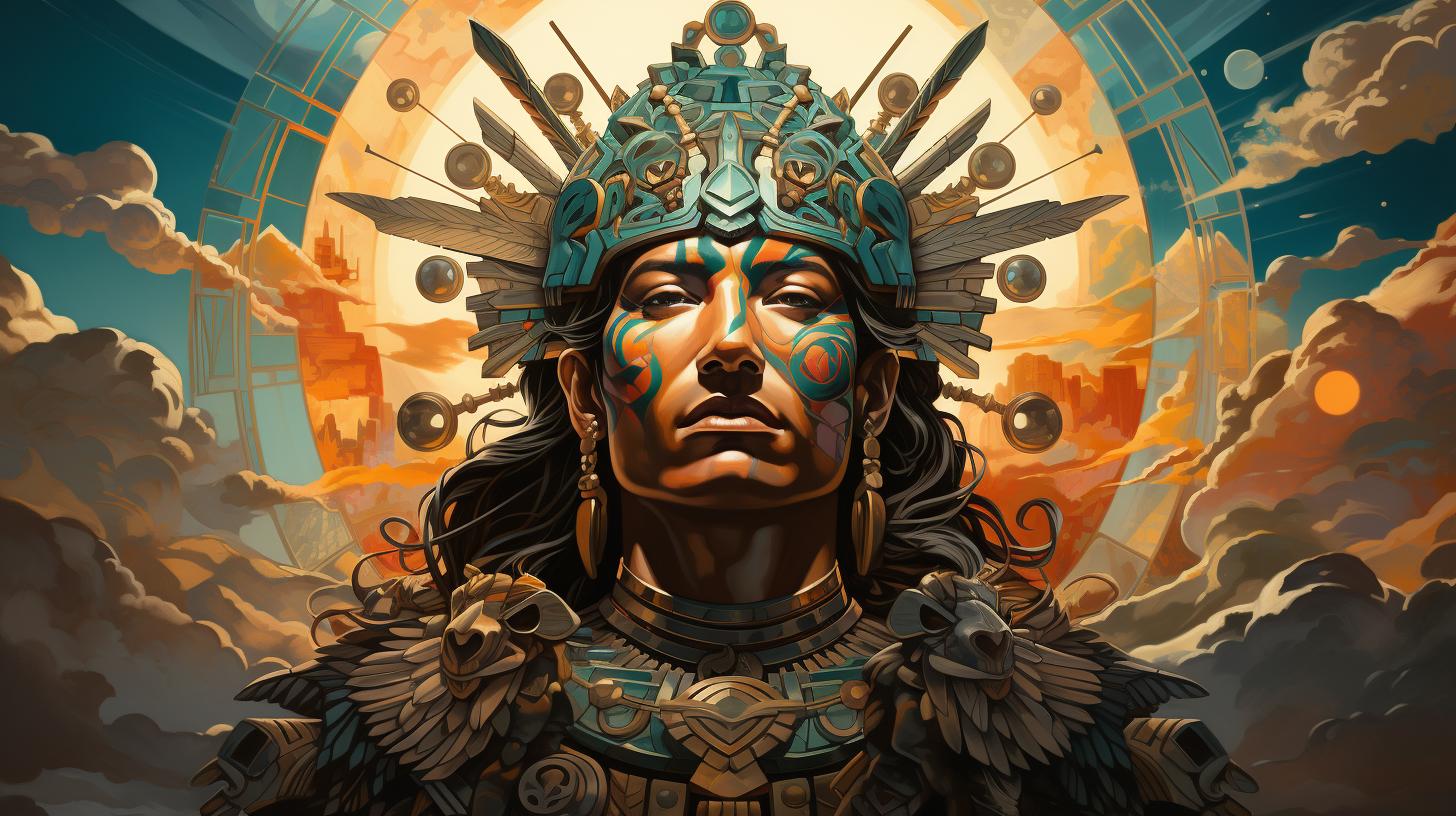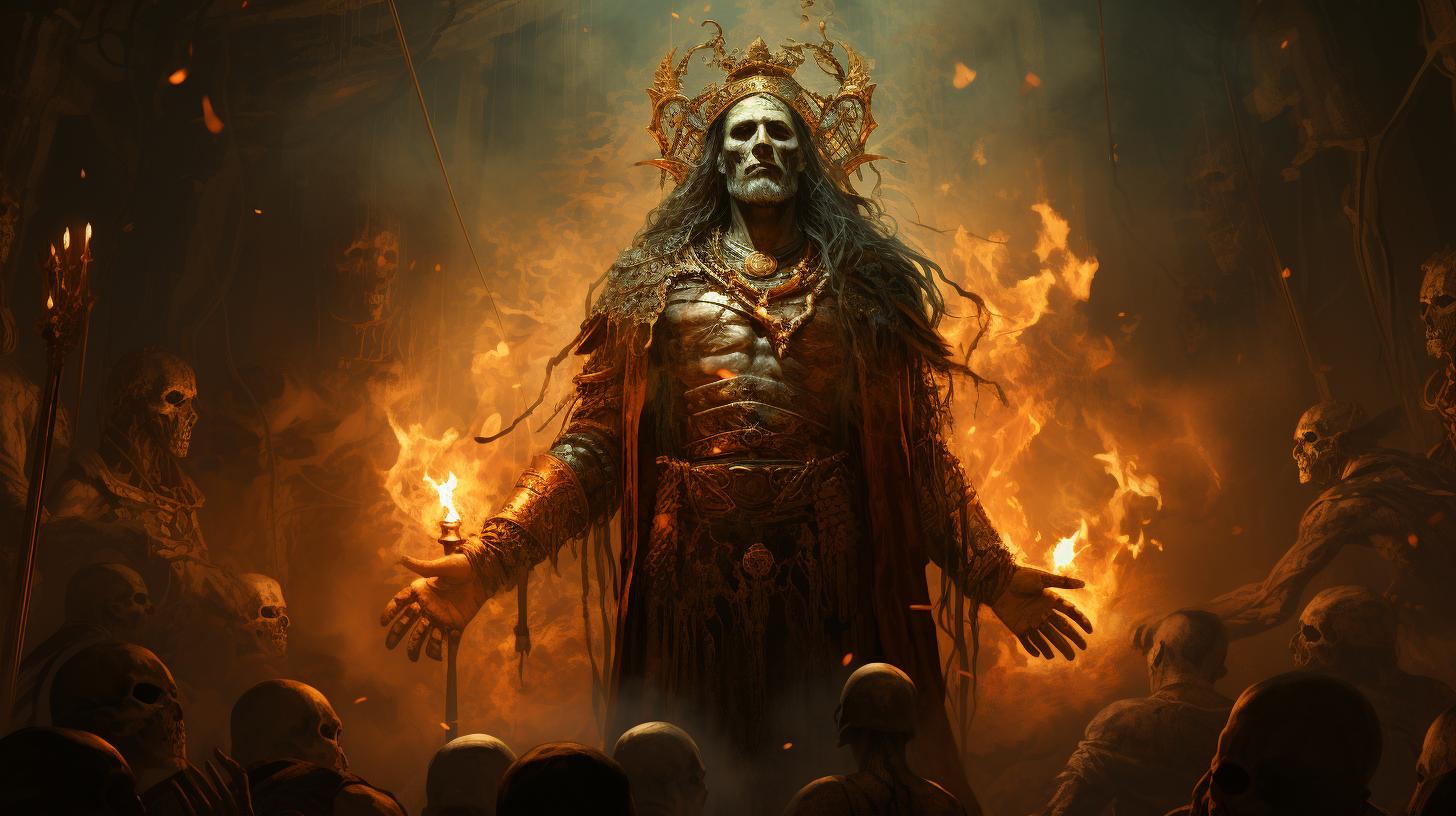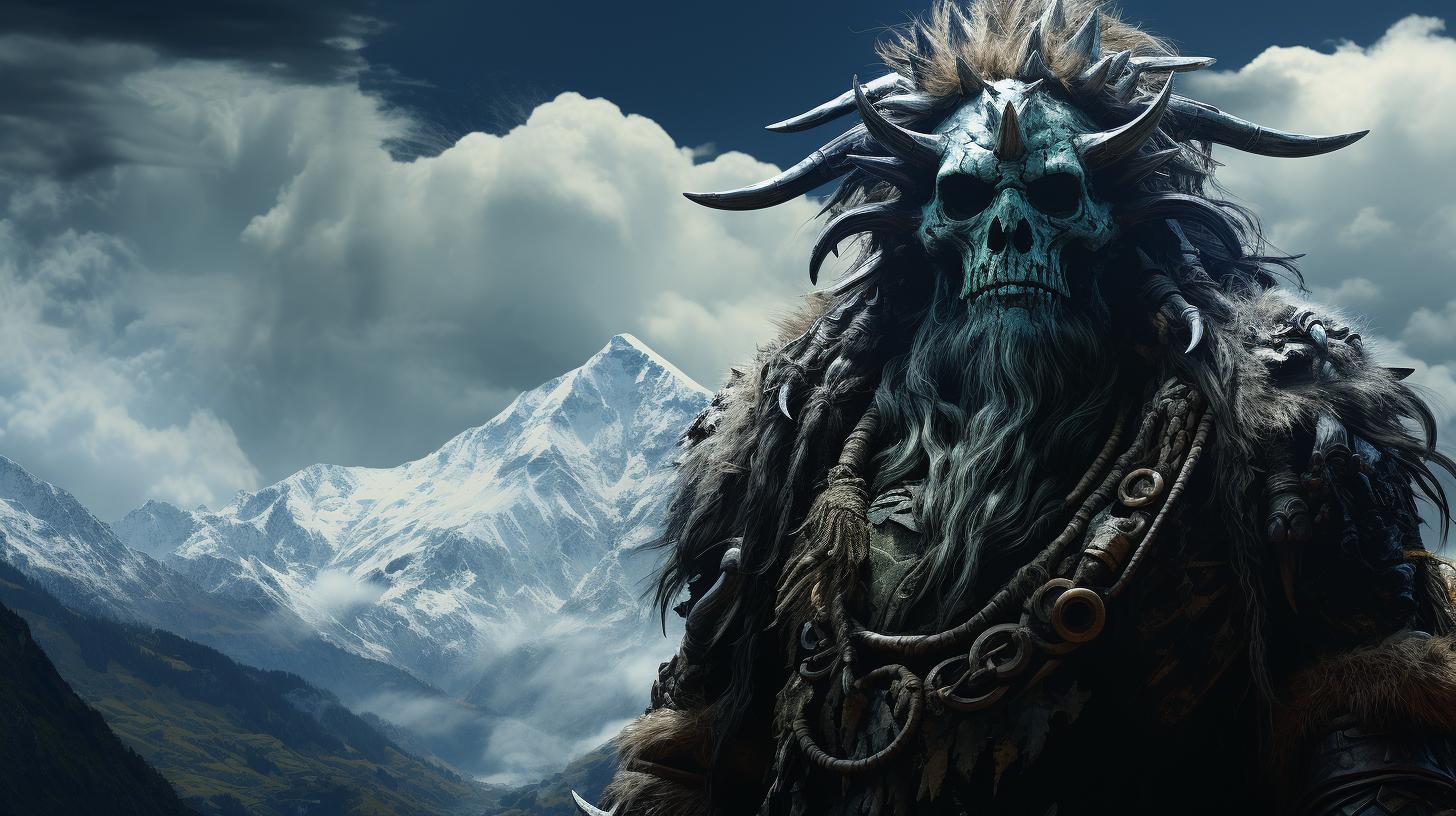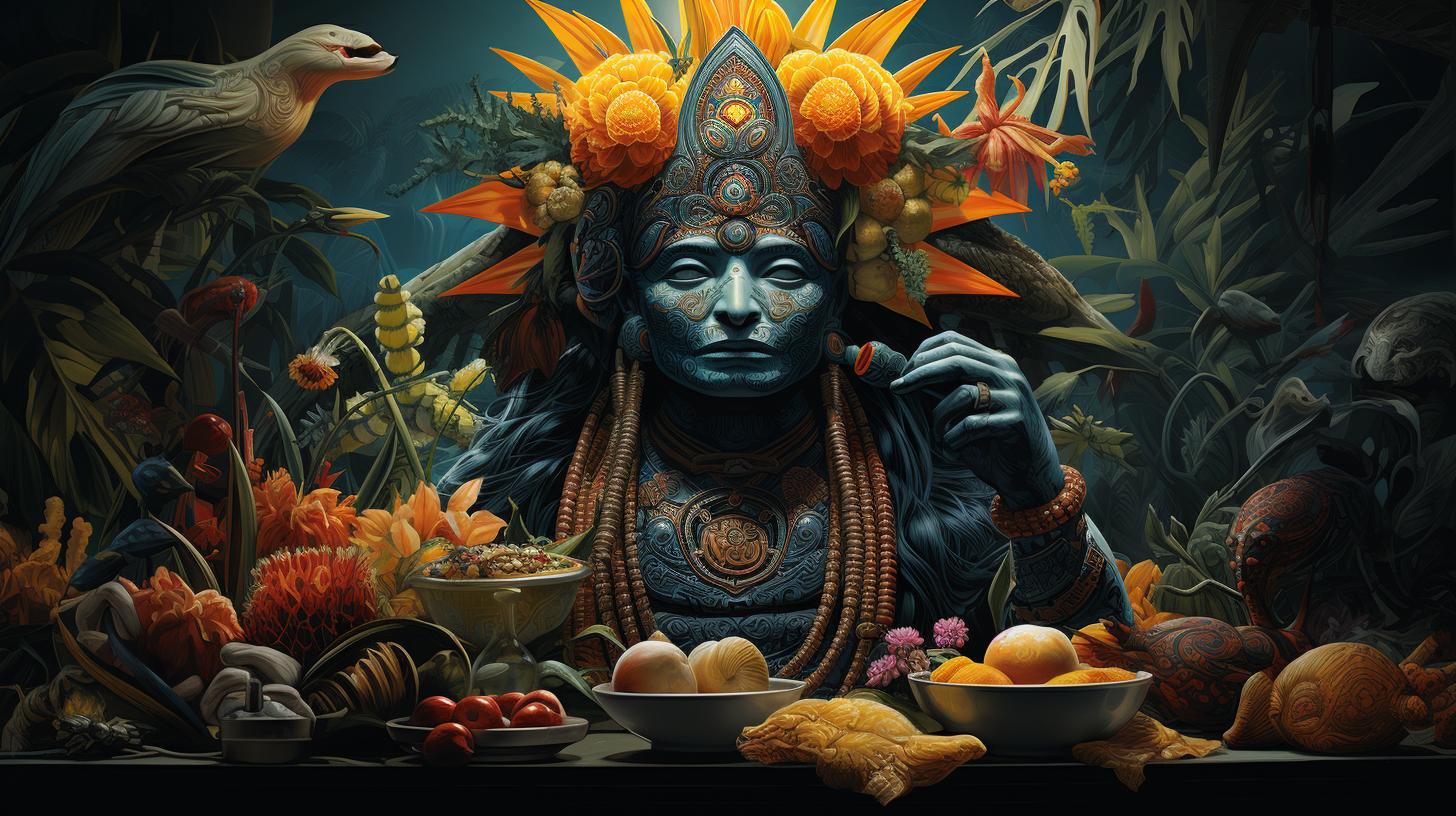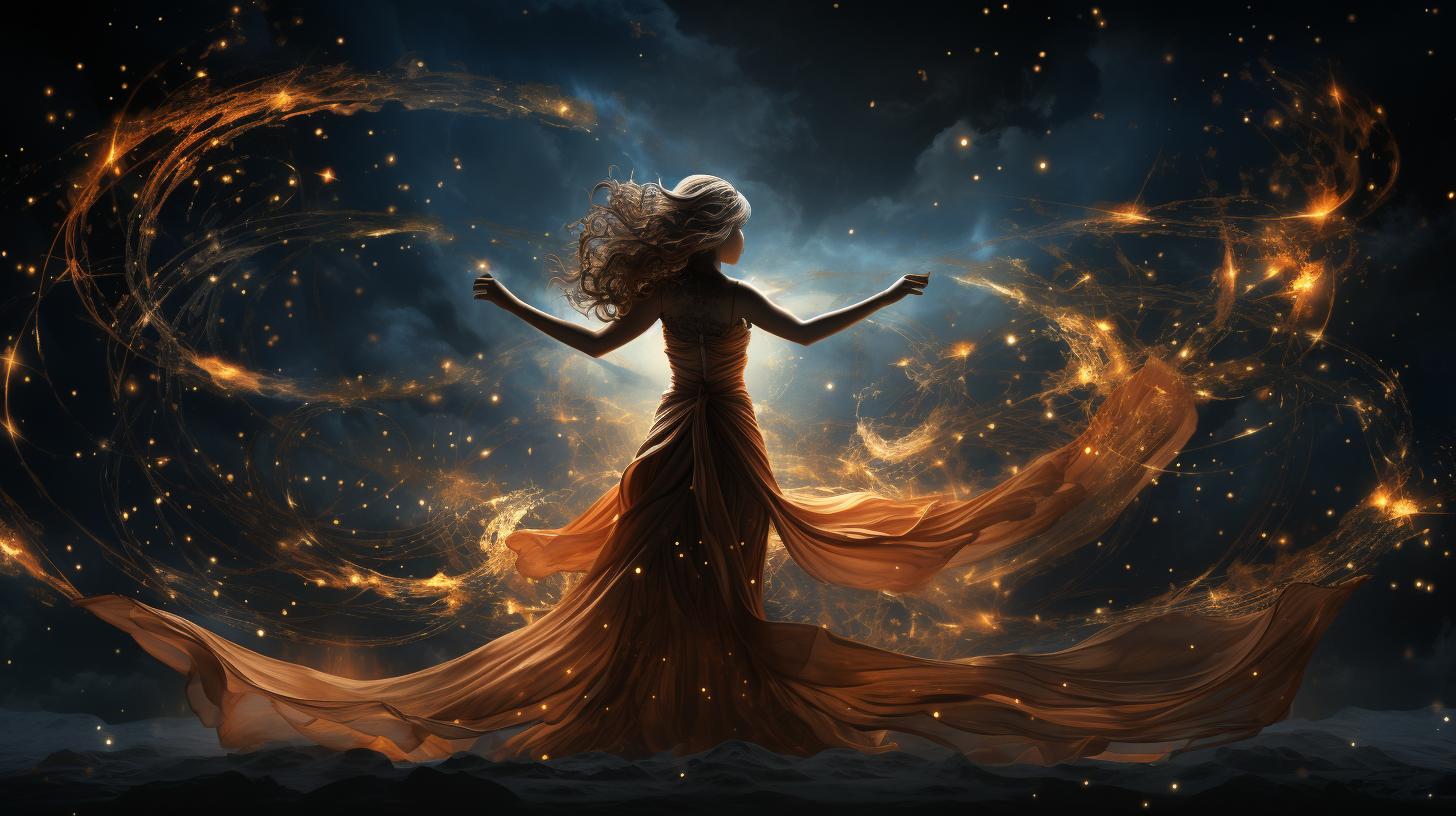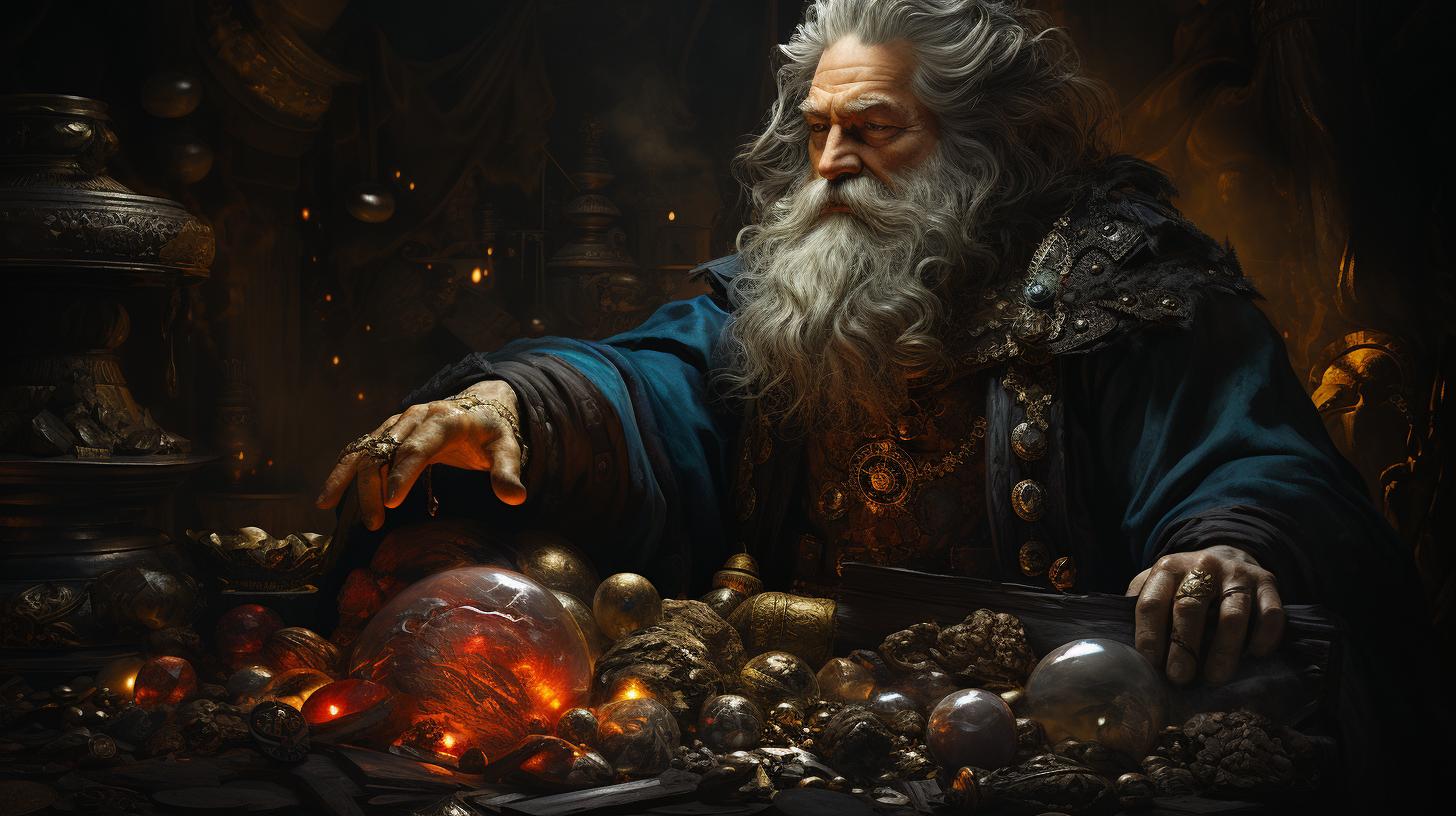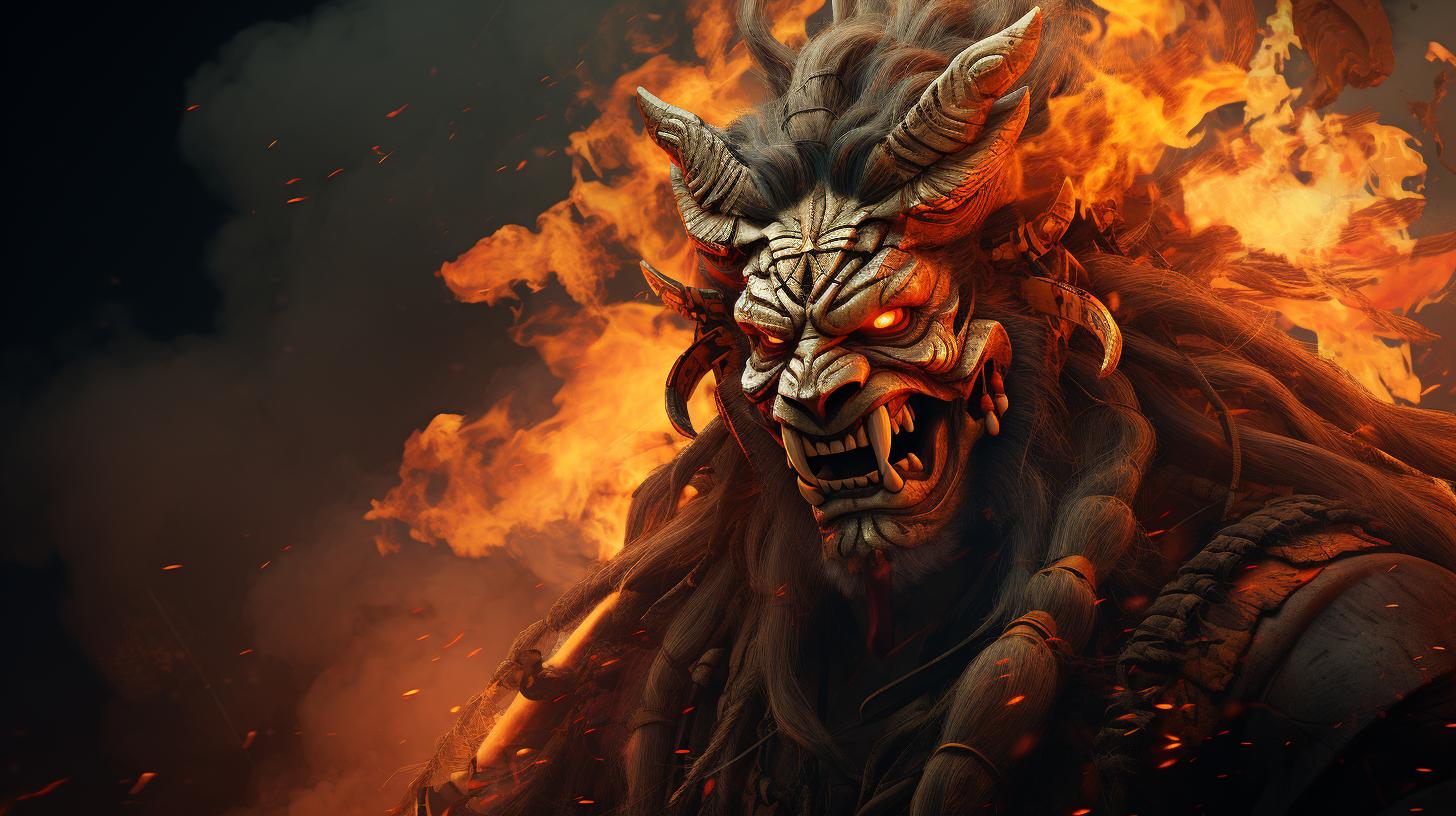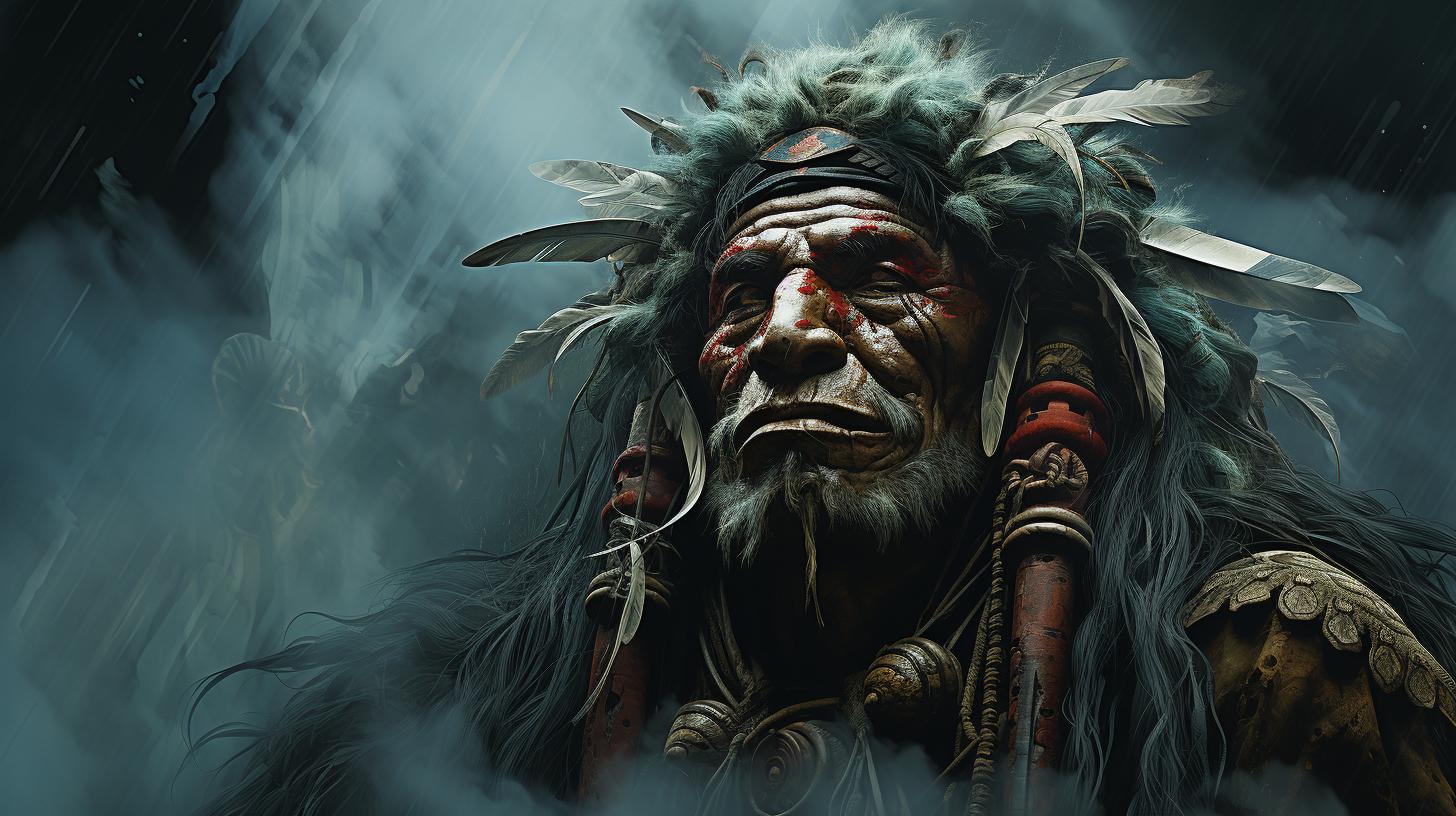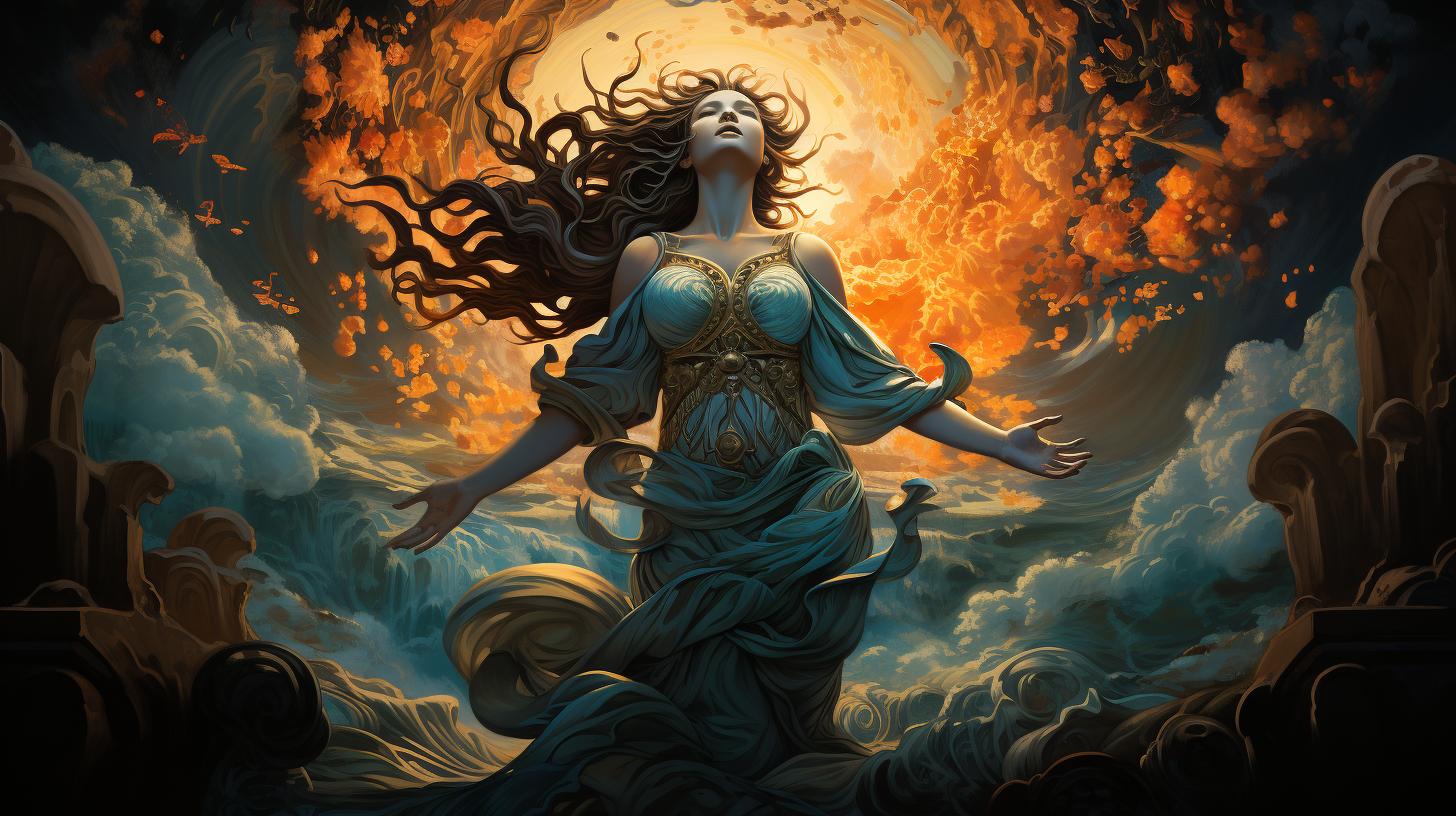Pachacamac Inca God: Unveiling the Ancient Deity of the Incas
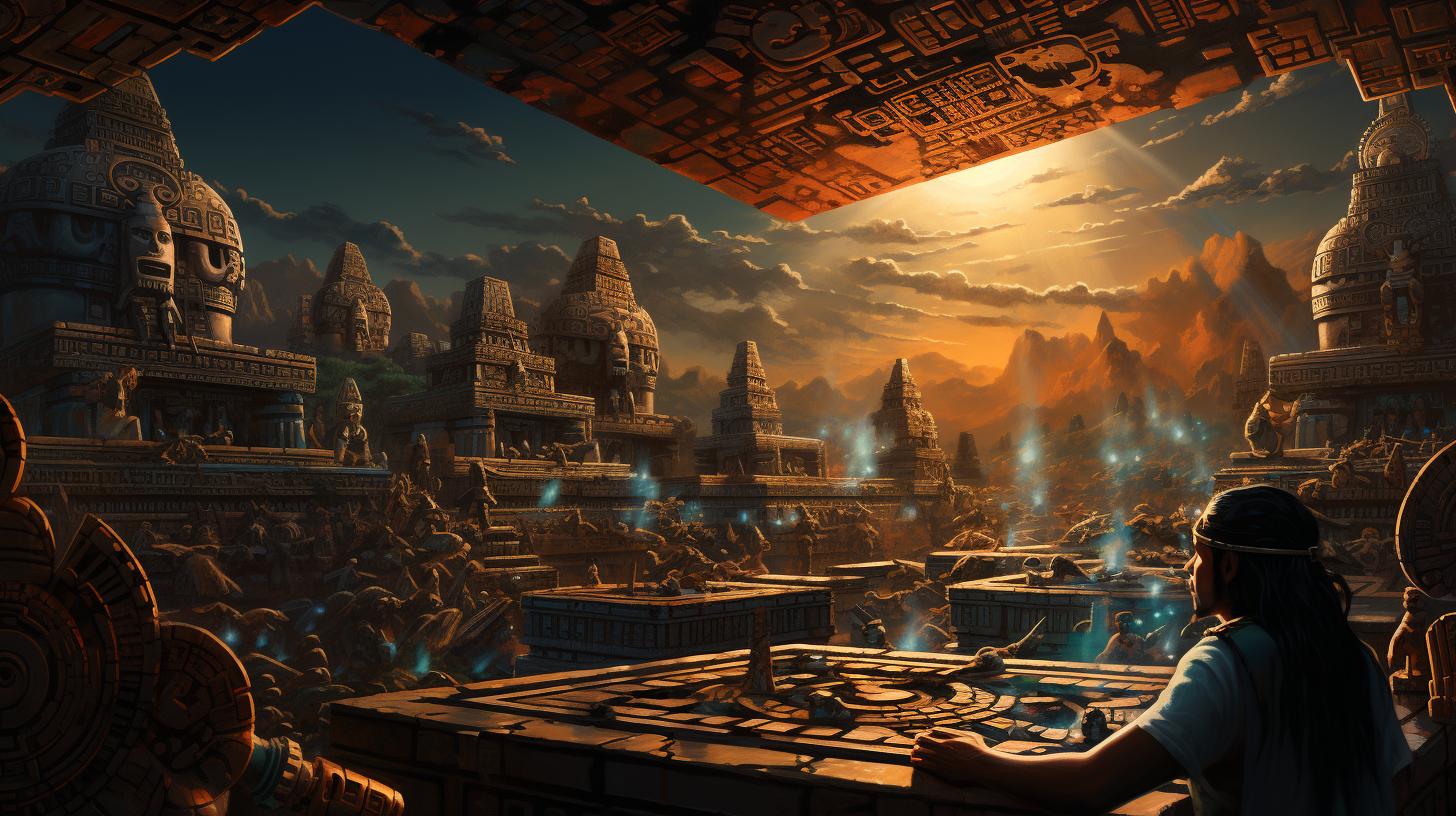
Pachacamac Inca God, a prominent deity in Inca mythology, holds great significance in Peruvian culture. Believed to be the creator god, Pachacamac played a crucial role in Inca civilization as the sun god and the patron deity of Peru.
Numerous temples were erected in tribute to Pachacamac, including the renowned Great Temple. Ancient rituals, ceremony, and offerings were dedicated to this revered deity, emphasizing the importance of sacrifice. Pachacamac’s influence endures today, with his legacy deeply ingrained in contemporary Peruvian culture.
Excavations have brought to light intriguing artifacts that shed light on the enigmatic symbolism surrounding Pachacamac. Exploring the sacred site of Pachacamac is an immersive journey into Peru’s rich cultural heritage.
This ancient deity continues to inspire popular culture, making appearances in literature, media, and influencing modern spiritual practices.
The Origins and Mythology Surrounding Pachacamac
The story of Pachacamac, the revered Inca god, traces back to ancient times and is intertwined with the rich mythology of the Incas. This section explores the origin tales and the role Pachacamac played as a creator god.
The Inca Creation Story
At the heart of Inca mythology lies the creation story that explains the beginning of the world and the emergence of human beings. According to Inca beliefs, Viracocha, the supreme deity, created the world, along with other gods, through his divine power.
As part of this creation process, Pachacamac emerged as one of the powerful deities, entrusted with essential responsibilities.
Pachacamac’s Role as the Creator God
Pachacamac held a significant place in the Inca pantheon as the god of creation. Revered as the divine force behind the origin of life and the source of all existence, Pachacamac was believed to have shaped the world and brought forth humanity.
The Incas saw him as the ultimate creator, responsible for the harmonious balance of the natural and spiritual realms.
Pachacamac’s creative powers extended beyond the physical realm. It was believed that he could also control the destiny and fortune of individuals.
The Incas sought his guidance and blessings for prosperity, fertility, and protection.
The intricate mythology surrounding Pachacamac reflects the deep reverence and awe the Incas held for this deity. Exploring the origins and role of Pachacamac offers a glimpse into the complex belief system that shaped Inca culture and influenced their societal practices.
Pachacamac’s Significance in Inca Civilization
Pachacamac played a vital role in Inca civilization, being revered both as the Sun God and the Patron Deity of Peru.
Pachacamac as the Sun God
The Inca people worshipped Pachacamac as the embodiment of the sun, believing that he had the power to control the celestial bodies and bring light and warmth to the world. As the Sun God, Pachacamac symbolized vitality, life, and the cycles of nature.
The Incas believed that by paying homage to Pachacamac, they could ensure bountiful harvests, prosperity, and protection.
Mythological Importance
According to Inca mythology, Pachacamac was responsible for creating the first man and woman, who were made from clay. Through his divine breath, he infused them with life and bestowed upon them their unique characteristics.
This creation story solidified Pachacamac’s status as a powerful deity and emphasized his role as the giver of life.
Pachacamac as the Patron Deity of Peru
In addition to being the Sun God, Pachacamac held the title of the Patron Deity of Peru. The Incas considered him the guardian of the land and protector of their empire.
His influence extended beyond agriculture and weather, as he was also believed to have control over seismic activity and Earth’s fertility. The Incas sought his favor and guidance through rituals and offerings, hoping to maintain harmony with nature and ensure the prosperity of their civilization.
Rituals and Offerings
To appease and honor Pachacamac, the Incas performed elaborate ceremonies and made regular offerings. Sacrifices of animals, such as llamas and guinea pigs, were made to demonstrate gratitude and seek blessings from the deity.
These rituals, conducted by priests in dedicated temples, were a central part of Inca religious practices and played a crucial role in maintaining the balance between humanity and the divine.
In summary, Pachacamac’s significance in Inca civilization was twofold.
As the Sun God, he represented the life-giving force of the sun and its influence on agriculture and prosperity. Additionally, as the Patron Deity of Peru, he was seen as the protector of the land and held sway over seismic activities and Earth’s fertility.
Through rituals and offerings, the Incas sought to maintain a harmonious relationship with Pachacamac and ensure the flourishing of their civilization.
Temples Dedicated to Pachacamac
Pachacamac, the revered Inca god, was honored with various temples built in his name across Peru. These temples were important centers of worship and held great significance in Inca civilization. Let’s explore two notable temples dedicated to Pachacamac:
The Great Temple of Pachacamac
The Great Temple of Pachacamac, located on the outskirts of present-day Lima, was the most prominent religious site dedicated to the god.
Built in the early 15th century, this grand temple complex consisted of multiple structures and courtyards. The temple’s remarkable architecture, characterized by adobe brick construction, showcased the Inca’s advanced engineering skills.
At the heart of the Great Temple, the main sanctuary housed a sacred idol of Pachacamac, where offerings and rituals took place. Pilgrims from various corners of the Inca Empire journeyed to this temple to seek the god’s blessings and guidance.
Exploring the ruins of the Great Temple today offers a glimpse into the awe-inspiring spiritual practices of the Incas.
Other Notable Pachacamac Temples in Peru
In addition to the Great Temple, there were several other significant temples dedicated to Pachacamac throughout Peru. These temples served as regional centers of worship, allowing communities to connect with the divine presence of Pachacamac.
One such notable temple is the Temple of the Sun, situated in the coastal city of Cerro Azul. This temple featured intricate carvings and depictions of Pachacamac, serving as a testament to the god’s power and influence.
The Temple of the Moon, located near Trujillo, was another prominent site where Pachacamac was venerated.
Each of these temples played a vital role in the religious lives of the Incas and served as gathering places for ceremonies, festivals, and rituals dedicated to Pachacamac.
The architectural marvels and spiritual significance of these temples continue to captivate visitors today, offering a window into the ancestral worship practices of ancient Peru.
Rituals and Offerings for Pachacamac
Discover the ancient ceremonies and celebrations dedicated to Pachacamac, the revered Inca god. These rituals played a vital role in connecting with the deity and seeking his blessings.
Ancient Ceremonies and Celebrations
- The Inti Raymi Festival: This grand annual celebration honored Pachacamac as the sun god and marked the Inca New Year.
With colorful processions, music, and offerings, it showcased the gratitude and devotion towards Pachacamac.
- The Offering of the First Harvest: In gratitude for abundant harvests, communities would gather their first crops and present them as offerings to Pachacamac.
These ceremonies symbolized the cycle of life and the reliance on the deity for sustenance.
- The Full Moon Rituals: During full moon nights, people would gather at Pachacamac’s temples to engage in sacred dances, chants, and prayers, seeking blessings for prosperity, protection, and spiritual guidance.
The Importance of Sacrifice in Pachacamac Worship
Sacrifice held a significant place in Pachacamac worship, symbolizing the reciprocal relationship between humans and the divine.
It exemplified the devotion and commitment of the worshippers.
- Animal Sacrifices: The Inca people offered various animals such as llamas, guinea pigs, and birds to Pachacamac as a gesture of gratitude and to ensure their favor.
These sacrifices were believed to bring prosperity, fertility, and protection.
- Human Sacrifices: In rare instances, human sacrifices were conducted as the ultimate offering to Pachacamac. Usually, they were chosen from noble families or prisoners of war.
This act demonstrated the highest form of dedication and the belief in the deity’s power.
- Symbolic Offerings: Apart from live sacrifices, symbolic offerings like gold, silver, textiles, and food were presented to Pachacamac.
These objects held spiritual and ritualistic significance and were considered valuable gifts to appease the god.
Exploring the rituals and offerings associated with Pachacamac offers glimpses into the deep spiritual connection between the Inca civilization and their revered deity.
The ceremonies and sacrifices were integral in maintaining harmony and seeking divine blessings for prosperity and well-being.
Pachacamac’s Legacy and Influence in Modern Times
In the modern era, Pachacamac continues to exert a powerful influence on Peruvian culture, showcasing the enduring legacy of this ancient deity. Pachacamac’s significance can be seen in various aspects of contemporary Peruvian society.
Pachacamac in Contemporary Peruvian Culture
Pachacamac holds a revered place in Peruvian culture, acting as a symbol of national pride and heritage. His mythical status has inspired countless works of art, literature, and music, fostering a sense of cultural identity and connection to ancestral traditions.
Pachacamac’s influence can be witnessed in traditional dances, festivals, and even the naming of streets and landmarks across Peru.
Rediscovering Pachacamac: Tourism and Education
Pachacamac’s rich history and archaeological significance have attracted tourists and researchers from around the world. The ancient site of Pachacamac, with its well-preserved ruins, offers a unique opportunity to delve into the mysteries of Inca civilization.
Tourists and visitors can explore the temples, marvel at the artwork, and gain a deeper understanding of the rituals associated with Pachacamac worship.
Furthermore, educational institutions emphasize the study of Pachacamac and its cultural significance.
Universities and research centers collaborate to uncover new insights into the mythology and history surrounding this deity. Archaeological discoveries continue to shed light on Pachacamac’s role in Inca society, influencing the education and understanding of Peru’s past.
Key Points:
- Pachacamac is an integral part of modern Peruvian culture, celebrated in art, literature, and music.
- The ancient ruins of Pachacamac attract tourists and scholars, offering a glimpse into Inca civilization.
- Educational institutions prioritize the study and research of Pachacamac, contributing to a better understanding of Peru’s history.
Unveiling the Mysterious Pachacamac Artifacts
Archaeological Discoveries
Exploring the sacred site of Pachacamac has led to remarkable archaeological discoveries that provide invaluable insights into the ancient Inca civilization.
Excavations at the ruins have unearthed a myriad of artifacts, including pottery, sculptures, and tools, showcasing the exquisite craftsmanship of the Incas. These findings offer clues about the religious practices, daily life, and cultural beliefs of the people who revered Pachacamac.
Moreover, archaeological research has revealed the existence of burial sites and tombs near Pachacamac, shedding light on the funerary rituals and beliefs surrounding death in Inca society. The artifacts discovered within these graves provide a deeper understanding of the spiritual significance attributed to Pachacamac and offer glimpses into the afterlife beliefs of the Incas.
Pachacamac Art and Symbolism
Artifacts found at Pachacamac exemplify the intricate symbolism associated with the worship of Pachacamac. Intriguing depictions of deities, such as Pachacamac, Inti (the sun god), and Mama Quilla (the moon goddess), provide valuable insights into the religious iconography and beliefs of the Incas.
Symbolic representations of agriculture, fertility, and celestial bodies are recurrent themes in the art discovered at Pachacamac. Intricate pottery designs reflect the vibrant imagery of the natural world and the divine forces that governed it.
The artwork not only showcases the artistic mastery of the Incas but also serves as a window into their cosmology and spiritual connection with nature.
Exploring Pachacamac: A Journey to the Sacred Site
Embarking on a journey to explore Pachacamac, the sacred site of the Inca god, is a captivating experience that offers a glimpse into ancient Peruvian history and spirituality.
Steeped in mystery and surrounded by breathtaking landscapes, the ruins of Pachacamac provide a unique opportunity to delve into the rich cultural heritage of the Incas.
Planning a Visit to Pachacamac Ruins
Before setting foot on this historical site, proper planning is essential to make the most of your visit to the Pachacamac ruins.
Begin by researching the best time to go, taking into account weather conditions and any special events or festivals happening in the area. Consider booking a guided tour to gain valuable insights into the significance of each structure and the stories they hold.
When preparing for your trip, remember to pack essentials such as comfortable walking shoes, sunscreen, a hat, and water to stay hydrated during your exploration of the site. It is also advisable to bring a camera to capture the breathtaking views and remarkable archaeological remains.
Upon arrival, take some time to familiarize yourself with the layout of Pachacamac. A visitor center provides maps, information, and archaeological displays that enhance your understanding of the site’s historical importance.
You can also learn about ongoing preservation efforts aimed at conserving Pachacamac for future generations.
Interpretation and Preservation of Pachacamac’s Heritage
Preserving and interpreting the cultural heritage of Pachacamac is of utmost importance. Various institutions and organizations collaborate to protect and promote the site’s historical significance. Through ongoing archaeological research and careful preservation, Pachacamac’s legacy continues to unfold.
In collaboration with local communities, scholars, and experts, efforts are underway to decipher the symbolic meaning behind the ruins and artifacts found at Pachacamac. Through interpretation, historians strive to shed light on the rituals, ceremonies, and beliefs associated with the worship of Pachacamac.
Preservation initiatives focus on maintaining the integrity of the structures, implementing restoration projects when necessary, and ensuring responsible tourism practices. Balancing visitor access with the preservation of Pachacamac’s delicate archaeological remains is crucial to safeguarding this sacred site for future generations.
The interpretation and preservation of Pachacamac’s heritage serve as a window into the fascinating world of the Inca civilization and its reverence for Pachacamac, allowing visitors to connect with Peru’s ancient past and appreciate the profound cultural significance of this sacred site.
Pachacamac Inca God in Popular Culture
Representation in Literature and Media
Pachacamac Inca God has captured the imagination of writers and filmmakers, making appearances in various literary works and media productions. In novels and historical fiction, Pachacamac is often depicted as a powerful deity influencing the lives and destinies of characters.
Films and documentaries explore the mythological aspects of Pachacamac, shedding light on the fascinating tales surrounding this revered deity. His role as a symbol of creation and the sun god has inspired artists to create visually captivating portrayals of Pachacamac in paintings, sculptures, and other forms of artistic expression.
Pachacamac’s Influence on Modern Spiritual Practices
The ancient beliefs and rituals associated with Pachacamac have resonated with modern spiritual seekers, leading to a revival of interest in his worship and practices. Some individuals integrate elements of Pachacamac’s spirituality into their personal belief systems, finding inspiration in his roles as a creator and sun god.
Ceremonies and rituals inspired by Pachacamac are conducted by contemporary spiritual communities, offering participants a connection to the ancient wisdom and the divine energy associated with this Inca deity. Pachacamac’s influence extends beyond Peru, captivating spiritual enthusiasts worldwide who are drawn to the mystical essence of this revered god.
- Pachacamac in modern literature and historical fiction
- Depictions of Pachacamac in films and documentaries
- Visual representations of Pachacamac in art
- The integration of Pachacamac’s spirituality in personal belief systems
- Contemporary ceremonies and rituals inspired by Pachacamac
- Pachacamac’s global influence on spiritual enthusiasts
.











